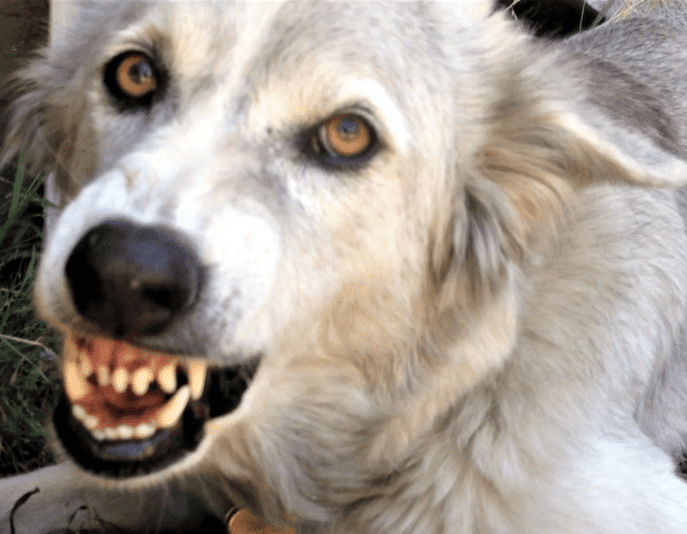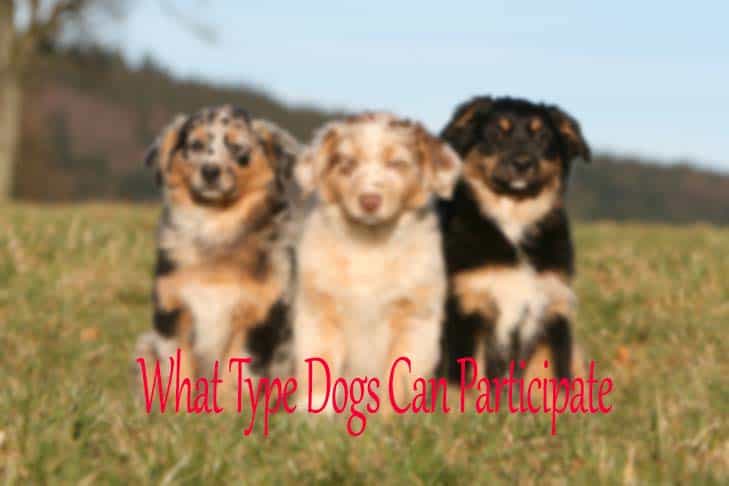When a dog shows teeth, it can be a powerful and surprising moment that reveals a deeper aspect of their nature. While it may initially strike fear or concern in us, understanding why dogs bare their teeth is key to comprehending their behavior. In the world of canines, displaying teeth is not always a sign of aggression; instead, it can be a form of communication or a way to assert dominance. This blog delves into the various reasons behind this behavior and sheds light on how to interpret a dog’s toothy display. Stay tuned as we explore the fascinating world of dog behavior and uncover the fierce beauty behind those intimidating teeth!
Introduction: Exploring the Fascination of Dogs Showing Teeth
When a dog shows teeth, it can be a fascinating yet misunderstood display of communication. This behavior, often associated with aggression, dominance, or fear, is a crucial aspect of canine body language that requires interpretation in context.
The Significance of Dog Body Language
Understanding the subtleties of dog shows teeth behavior is essential for responsible pet ownership. Dogs use a variety of visual and vocal cues to express their feelings, and recognizing these signals is key to maintaining positive interactions.
- Expressing Dominance through Teeth Display
- Signs of Fear or Anxiety in Dogs

The Significance of a Dog Showing Its Teeth
When a dog shows its teeth, it conveys a clear message that should not be ignored. This behavior is a crucial form of communication that dogs use to express various emotions, signaling their intentions and state of mind to those around them.
Understanding Aggression
One common reason a dog shows teeth is to display aggression. This can be due to fear, territorial instincts, or feeling threatened. It’s essential to assess the context and body language accompanying the gesture to understand the potential threat level.
Signaling Fear or Anxiety
On the other hand, a dog may bare its teeth as a sign of fear or anxiety. In such cases, the dog may feel cornered or uncomfortable, prompting this defensive behavior. Recognizing this can help de-escalate the situation and provide appropriate support.
Understanding Different Contexts of Dogs Showing Teeth
When a dog shows teeth, it can convey various messages depending on the situation. It is essential to understand the different contexts in which dogs display this behavior to interpret their intentions accurately.
Playful Interaction
In some cases, when a dog playfully shows teeth, it may be accompanied by a wagging tail and relaxed body language. This usually indicates that the dog is engaging in friendly play and is not expressing aggression.
Warning Signs
On the contrary, if a dog shows teeth along with growling or stiff body posture, it is likely a warning sign of aggression. This behavior may signal that the dog feels threatened or uncomfortable in the current situation.
Common Misconceptions About Dogs Showing Their Teeth
When a dog shows teeth, it often sparks fear or alarm in people. However, this behavior may not always signify aggression. Let’s debunk some common misconceptions surrounding dogs showing their teeth.
Myth: Dogs Only Show Teeth When Aggressive
Contrary to popular belief, dogs may bare their teeth as a form of communication, not necessarily as a sign of aggression. In some cases, dogs display their teeth during playtime or when they are excited.
Myth: Teeth Showing Always Indicates a Bite Is Imminent
While showing teeth can be a warning signal, it doesn’t always mean a dog will bite. Dogs may show their teeth as a way to express discomfort or to set boundaries before resorting to aggression.
Myth: All Dogs Display Teeth in the Same Context
Each dog is unique, and their behavior can vary. Some dogs may naturally show their teeth more often, while others rarely do. It’s essential to consider individual differences in canine body language.

How to Properly Interpret a Dog Showing Its Teeth
When a dog shows its teeth, it can be a sign of various emotions, ranging from aggression to fear. It’s essential to understand your dog’s body language to properly interpret this behavior.
Identifying the Context
Before jumping to conclusions, consider the context in which the dog is showing its teeth. Is it during playtime, a tense situation, or when approached by a stranger?
Understanding the surrounding circumstances can give you valuable insights into your dog’s intent.
Body Language Cues
Look for other body language signals accompanying the teeth display. Is the dog’s body tense or relaxed? Are the ears back or alert?
- Combine the teeth display with other body cues to decipher what your dog is trying to communicate.

Tips for Handling a Situation Where a Dog Shows Teeth
When a dog shows teeth, it is essential to stay calm and assess the situation carefully. Understand that the dog may be feeling threatened or fearful, and showing teeth is a way of communicating its discomfort. Here are some tips to handle such a situation:
1. Stay Calm and Avoid Provoking
Remain composed and avoid making sudden movements or loud noises that can escalate the tension. Do not try to touch the dog immediately.
2. Give the Dog Space
Allow the dog some space to calm down and assess the situation. Avoid direct eye contact as it may be perceived as a threat.
3. Speak Softly and Move Slowly
Use a gentle tone of voice to soothe the dog and move slowly to show that you mean no harm. Do not run or shout as it can trigger a defensive response.
Importance of Proper Training and Socialization in Preventing Aggressive Behavior
Proper training and socialization play a crucial role in preventing aggressive behavior in dogs. Early socialization exposes dogs to various stimuli, environments, and people, helping them to develop good behavior and communication skills.
Positive Reinforcement Training
Positive reinforcement training techniques such as rewards, treats, and praise are effective in teaching dogs desirable behaviors. Consistent rewards for good behavior reinforce positive habits.
Consistency and Structure
Consistency in training methods and providing a structured environment helps dogs understand boundaries and expectations. Clear rules and routines reduce stress and confusion, leading to better behavior.
Frequently Asked Questions
- Why do dogs show their teeth?
- Dogs show their teeth as a form of communication. It can be a sign of aggression, fear, or playfulness depending on the situation.
- What should I do if a dog shows its teeth at me?
- If a dog shows its teeth, it’s important to remain calm and avoid making sudden movements. Give the dog space and try to assess the situation before reacting.
- Can a dog showing teeth be a sign of happiness?
- In some cases, a dog showing its teeth can indicate a happy or playful state, especially if accompanied by a relaxed body posture and wagging tail.
- How can I teach my dog not to show its teeth in a threatening way?
- Training and socialization are key in teaching your dog appropriate behaviors. Positive reinforcement techniques can help encourage desired behaviors and discourage aggressive displays.
- Are certain dog breeds more prone to showing their teeth?
- While any dog can show its teeth depending on the situation, certain breeds may have a predisposition towards certain behaviors. Proper training and socialization are important for all breeds.
Unlocking the Canine Communication: Decoding When a Dog Shows Teeth
Understanding why a dog shows its teeth is crucial in interpreting their emotions and intentions. Whether it’s a sign of aggression, fear, or playfulness, observing their body language alongside the snarl can provide valuable insights into their state of mind. By recognizing these cues, we can better communicate with our furry companions and create a safer and more harmonious environment for both humans and dogs.
Remember, each dog is unique, and proper training and socialization play significant roles in their behavior. Always approach them cautiously and respect their boundaries to build trust and strengthen the human-canine bond. So next time your dog shows teeth, take a moment to analyze the situation and respond appropriately for a happier and healthier relationship.



